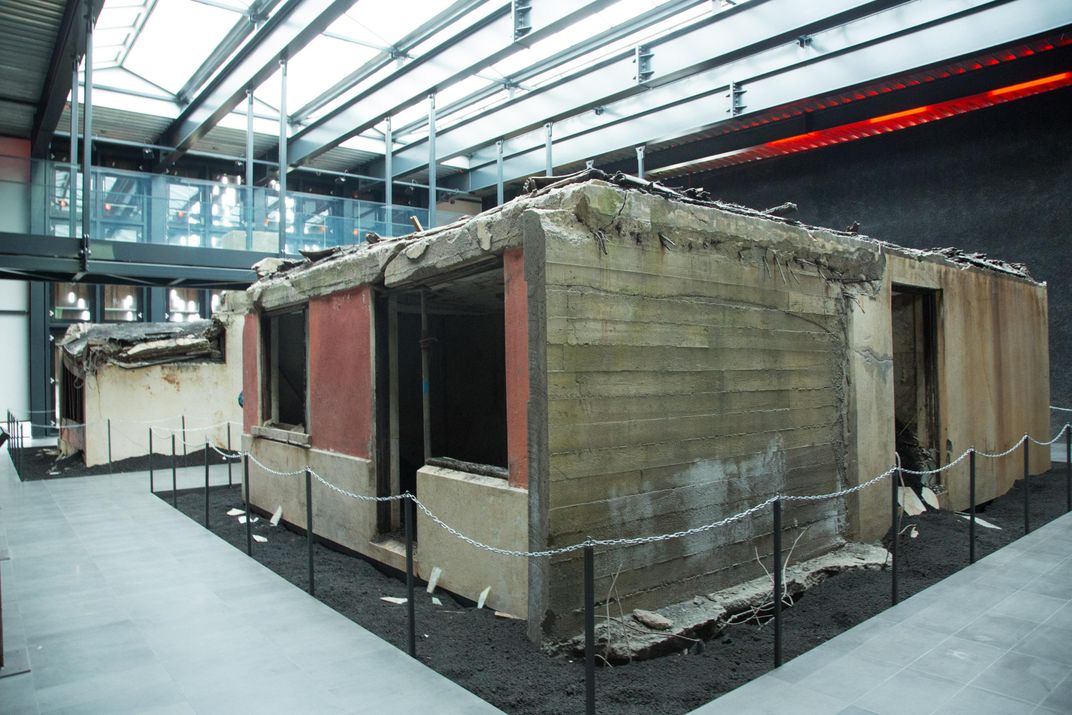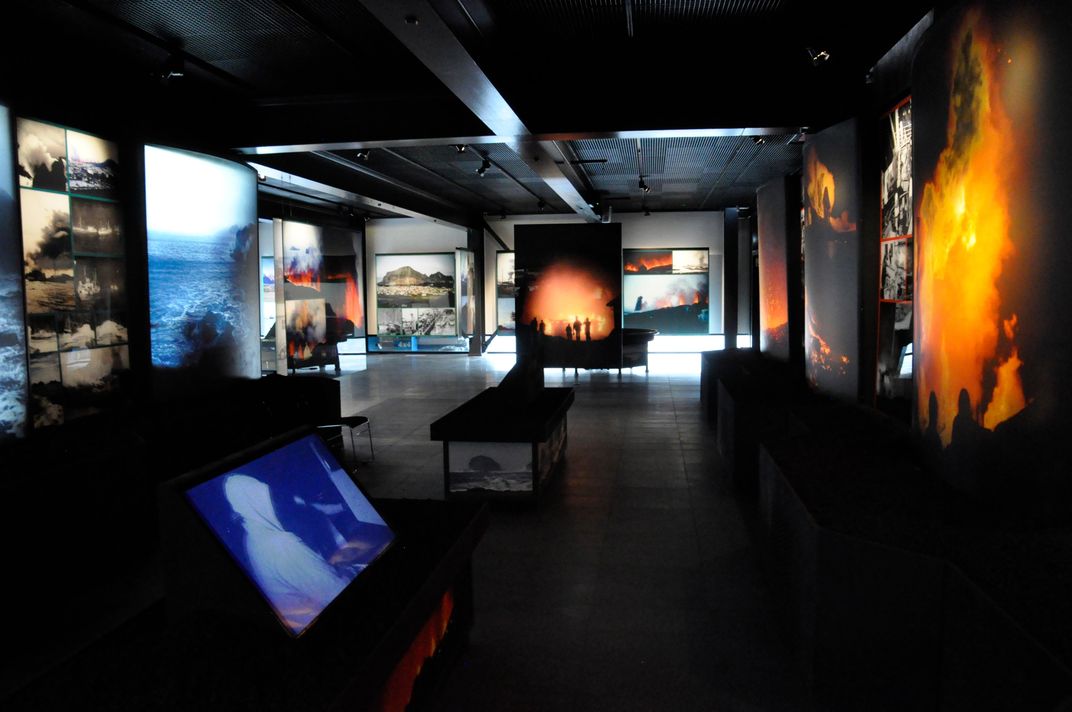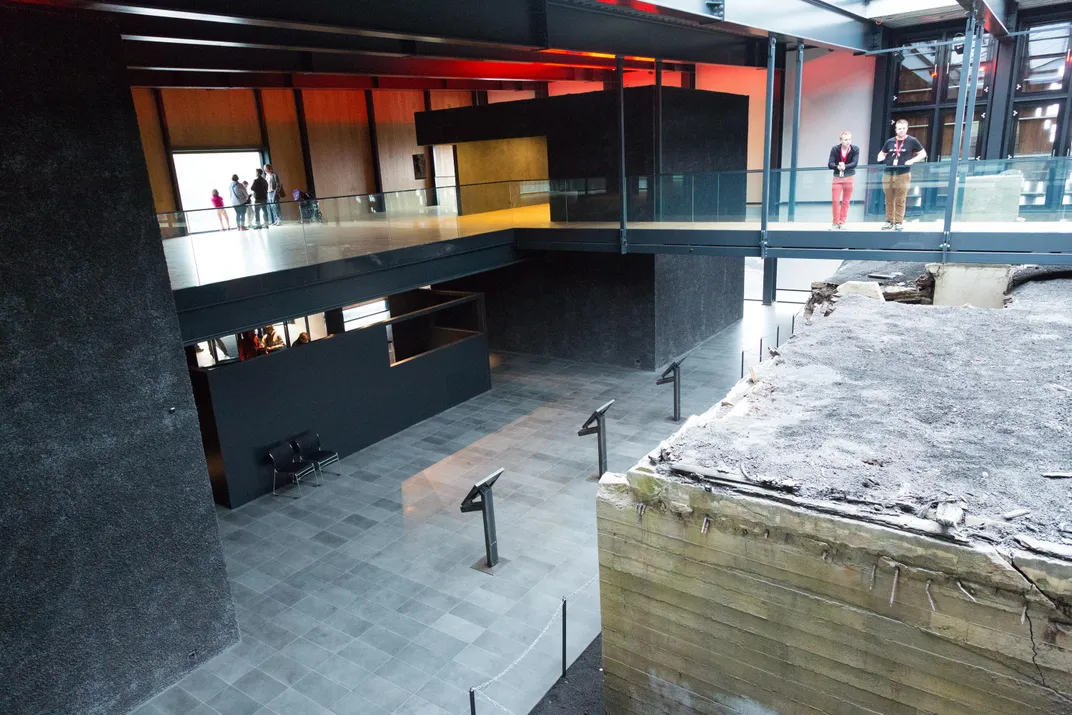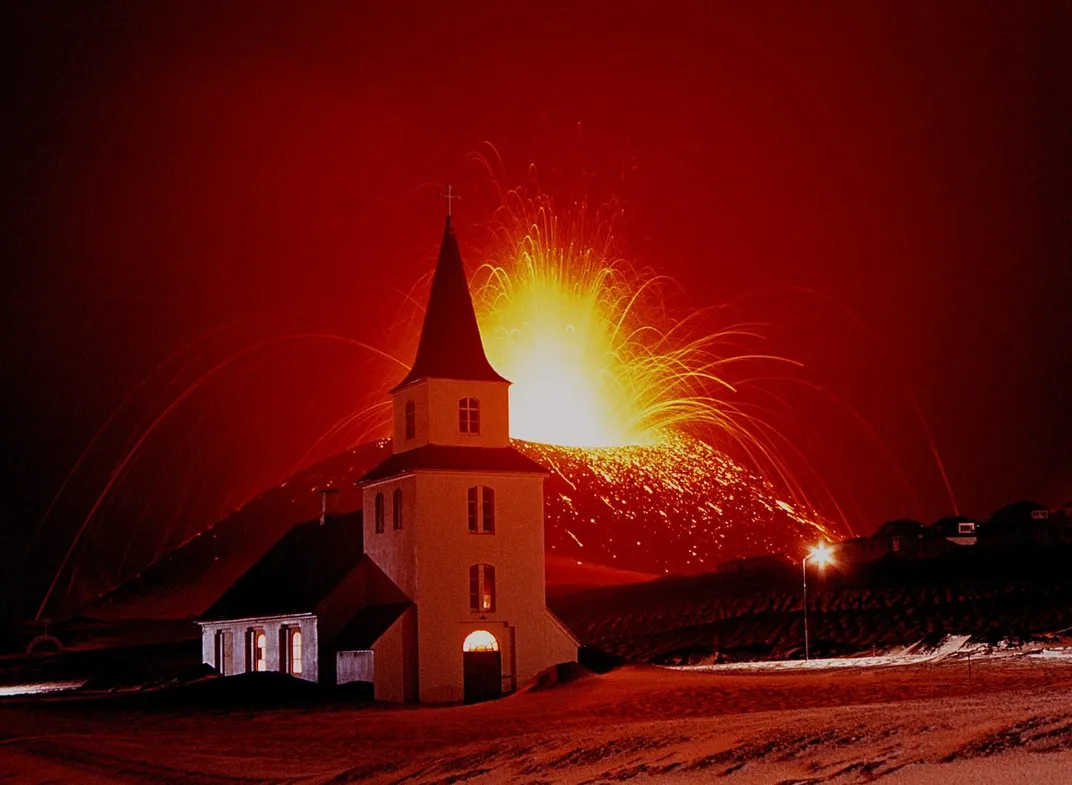This Town in Iceland Is a Modern Pompeii
Iceland’s ‘Mountain of Fire’ volcano wreaked havoc with an island and the island fought back
What if you could visit Pompeii or Herculaneum and meet the inhabitants who fled the horrific volcanic eruption of Mt. Vesuvius in 79 C.E. and decided to come back, dig out their old houses from under tons of pumice, and bring the towns back to life?
On the island of Heimaey, in the Westman island archipelago in the southern part of Iceland, you can do just that. Through guided tours, multimedia presentations and eyewitness accounts from survivors, an astonishing story of catastrophe and rebirth is vividly recreated.
On the morning of January 23, 1973 the Eldfell volcano erupted without warning, spewing lava over the fishing port of Vestmannaeyjar. In quick dispatch the entire population of the island was evacuated. “People thought it was the end of life here, “ a guide recently told a small group of visitors who were listening with rapt interest. But within two years, most of the 5,000 inhabitants had returned. “Try to imagine your house buried in ash,’’ the guide continued. “And you come back to dig it out and move back in again.” For five months, Eldfell—the name means “Mountain of Fire” in Icelandic–had its way with the island. Then, at last, the eruptions stopped. In all, half a million cubic meters of black volcanic ash covered their town. One third of the houses had survived. One third could be dug out. And one third were gone forever. Families started digging their way into their houses, literally picking up the pieces of their lives. Kids were overjoyed to find their toy trucks. Some folks just came to say farewell to their homes and their island, but most stayed.
Volunteers came from all over Iceland and then from all over the world to help. They removed an astounding 800,000 tons of ash and rebuilt the destroyed city. At some places, like the cemetery, removal of the pumice was all done by hand with garden shovels. Today, as the visitor enters the cemetery, he or she reads the words, “I live and you shall live. The haunting phrase is repeated in one of the many eyewitness accounts available as part of the audio tour at the Eldheimar museum, which is located in one of the houses that lay covered by 50 meters of pumice for 40 years.
Walking through the house is like entering a time capsule. Here dwelled a woman, her fishing boat captain husband, and their three kids, all asleep in the early hours when the volcano erupted. Visitors are hushed as they pass by a dinner plate, ceiling beams, a piece of clothing, a hanging lamp. They peer into the remains of the family fireplace, abandoned rooms, light bulbs in ceiling fixtures, blown-out windows.
An audio guide leads tourists through the sounds and sights of the explosion and its aftermath in images, words, and actual sound recordings. Visitors watch video footage of the evacuation and hear the announcement that was made to inform all the inhabitants that they had to leave their homes and head immediately for fishing boats. And they learn how the residents reacted: One man ran back to get his wallet. Someone grabbed a parakeet. Kids ran outside in pajamas. One kid took a school book, not realizing it would be a while before he could go back to school. By some miracle, all of the fishing boats were in the port that night because of recent storms, and the dazed locals climbed on board. They spent about four hours at sea, and then were met by buses and taken to Reykjavik.
The immediacy of the museum recreation is startling, moving, sometimes overwhelming, and unforgettable. Outside of the museum is a house that is still buried in lava, which looks like a huge pile of black coal.
Eldfell still looms large over the island. It remains active although it hasn’t erupted since that fateful night 44 years ago. Today, when tourists fly into the local airport on Haimaey, they may not realize that part of the runway was constructed from tephra, which is material that spewed into the air during the volcanic eruption. If they arrive by ferry, accompanied, perhaps, by puffins and gannets flying overhead, they are likely unaware that the island that stretches before them has increased by more than two kilometers since l973—about seven football fields– as a result of concentrated lava flow.
The island is easily accessed by driving 2-3 hours from Reykjavik and then boarding a ferry for a 30-45 minute ride. Visitors can learn as much as they desire about volcanoes (at the museum), see the volcanic features and the new parts of the island formed by lava, meet inhabitants and stop by other local sights, including a mountain that is considered one of the least hospitable locations on earth, with winds gusting up to 110 miles per hour.
Planning Your Next Trip?
Explore great travel deals
Smithsonian magazine participates in affiliate link advertising programs. If you purchase an item through these links, we receive a commission.






